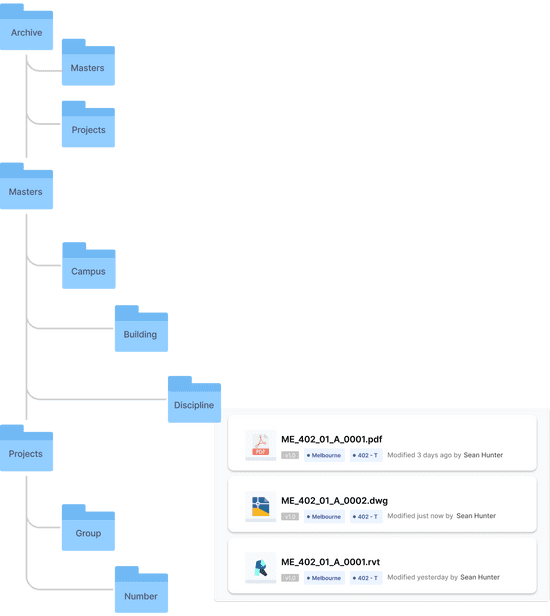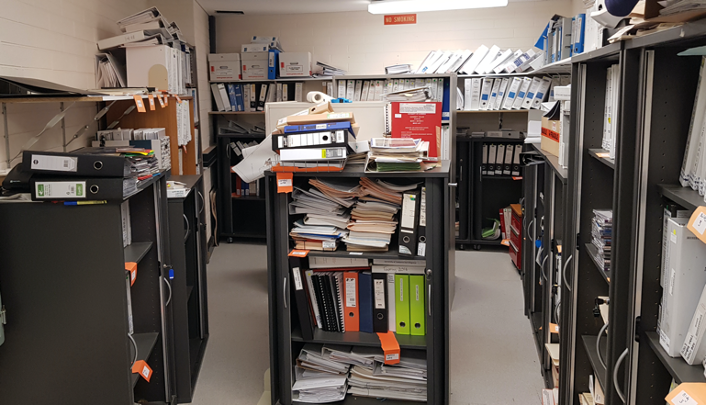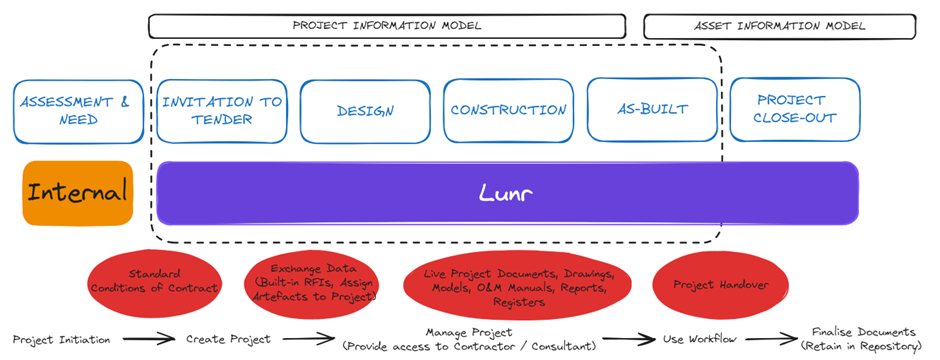A Better Way to Find your Engineering Content

There are three main ways for people to find content in an online system.
Search: Type in something you know about a document; the system will find it for you (like Google search). In a search-based system, documents are indexed by their content. This could be the title of a book you're looking for on Amazon, the text of a blog post on Google, or the drawing number inside a CAD title block. The benefit of a search-based system is that you don't need to know how the documents are organised to find what you're looking for. However, search systems do have a drawback. Systems with many documents in the search index can leave you with many search results to sort through before you find what you're after.
Browse: In browse-based systems, documents are curated using some taxonomy. On Amazon, these could be books classified by genre or author. In this case, you already have some information about what you're looking for, and this helps narrow down to a smaller subset of documents to select from. Well-curated browse-based systems can get you the information you're looking for with minimal clicks and can also help avoid missing key results that, for whatever reason, do not appear at the top of your search results.
Push: In a push-based system (like Amazon recommendations), the system (either through manual intervention or a more automated recommendations engine) can push documents you may be interested in, like books similar to those you've already purchased.
Each of these find modes has pros and cons, and the most potent systems tend to combine two or more approaches. They allow you to drill down into a subset of documents you're looking for using browse and filter these results with search — or vice versa, which is the approach we take at Lunr.
Engineering Content Search
Searching for engineering content typically revolves around a few critical pieces of metadata:
Title
Drawing Number
Discipline
and so on.
Whilst the principles discussed in this article apply to all document content, let's use drawings as an example. There are two critical use cases with search.
Tag-based search
Tag-based searches are convenient when you know something specific about a drawing (for example, the drawing number). In this case, users need a way to search for documents where the tag (drawing number) matches the specified value. In Lunr, this is achieved using the search filter dialogue. You can configure this dialogue to allow users to search for critical tags for your data set.
Full-text search
With a full-text search, you typically know something more general about the drawing you're looking for. For example, you may want to find all drawings referencing a particular street name or building material. Lunr indexes all tags stored against a document and the entire document content (extracted using XRAY). We capture as many document tags as possible during the data migration to ensure a well-curated repository. Full-text search can be a fallback for documents (particularly legacy drawings) that can't be curated to the same degree.
Browsing
In Lunr, you can curate engineering content using tags. Tags can be associated with folders and documents to classify them based on a taxonomy. Take a university campus as an example. In this case, you could create a taxonomy of Campus\Building\Discipline (for instance, Melbourne\983\Architectural) by creating folders and assigning named tags to these folders.
The system automatically curates any documents uploaded to this folder, applying the necessary tags. You can then either filter or browse documents using a well-known classification system. Browse-based systems are very convenient in cases where you know something broadly about the impacted set of documents (for example a building number) but need to know which drawing(s) you need. When a project needs to modify a building, navigating to that building in the folder hierarchy and checking out the relevant files for change is simply a matter of navigating to that building.
Push
Lunr has some preliminary functionality for pushing documents you may need at a given time, such as listing the documents you've recently worked on in the home dashboard. We see the potential for expanding on this in the future. Take the university building project example from above. What if you check out some documents for change but must remember to check out others? An excellent approach would be to recommend documents you may wish to check out simultaneously. This also intersects with BIM. If you have a Building Information Model representing a particular building, you likely have 2D drawings (or PDFs) representing views on this model. If you're checking out the model, you'll likely need to check out the 2D views simultaneously. A recommendation-based approach can help with this.
In closing
Digital systems have many stakeholders, and Drawing Management Systems are no exception. Different stakeholders prefer to navigate the data/documents in various ways. For some, search provides a quick and convenient way to find what they're after without requiring deep knowledge of how the data is structured. For others, a deep understanding of the assets or data set is crucial to their job (University Space Managers live and breathe TEFMA guidelines, for example), and tag/browse-based search modes can give them a shortcut to find what they're looking for.


